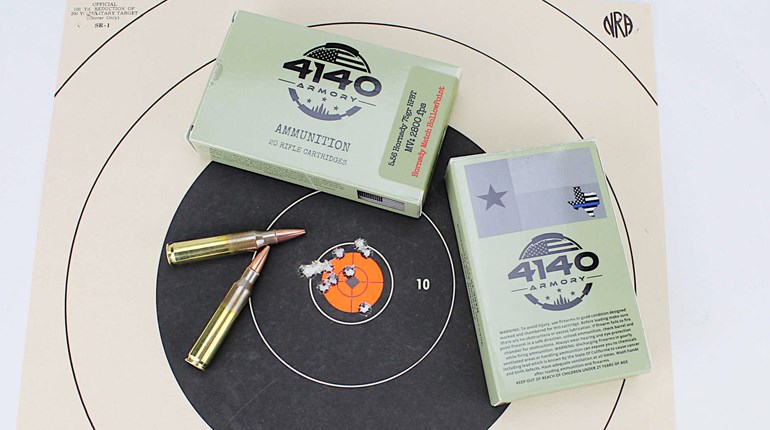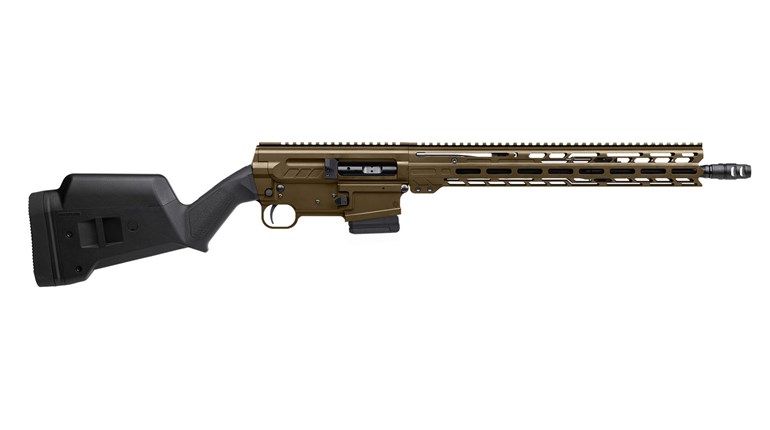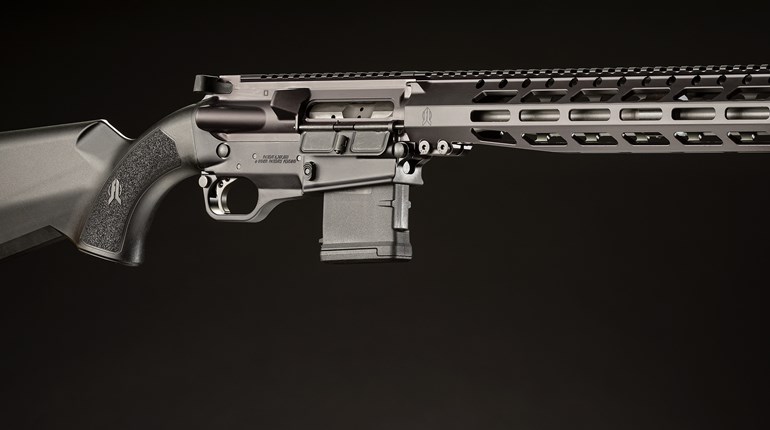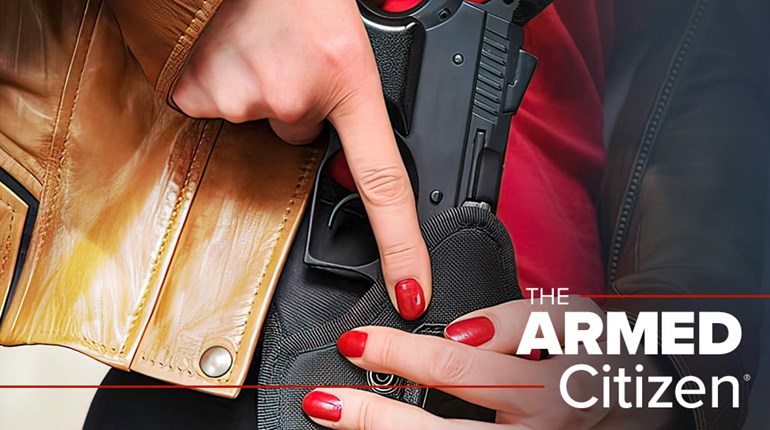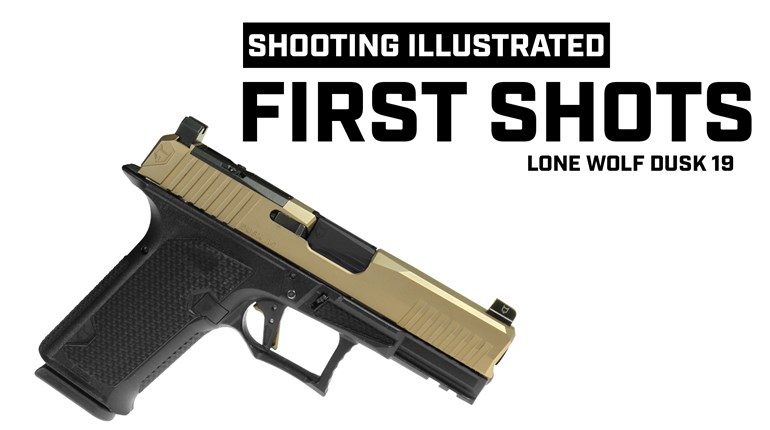
We’ve often praised the MSR/AR platform for versatility, but DoubleStar’s ARC in .300 Blackout makes the case that you can double up—pun intended—on those already fine attributes.
This feature appears in the August ’17 issue of NRA America’s 1st Freedom, one of the official journals of the National Rifle Association.
One of the things we like best about shooting in the “heyday” of the modern sporting rifle is experiencing the versatility of the type. Along many axes, the AR-pattern is proving to be—perhaps already is—the most versatile firearm ever designed. Bravo, Messrs. Stoner, Fremont and Sullivan. On occasion, the proofs of this are prosaic rather than grand, and a DoubleStar “Always Ready Carbine” (ARC) in .300 Blackout is our latest reminder: Excellence may not always appear in gilt fashion.
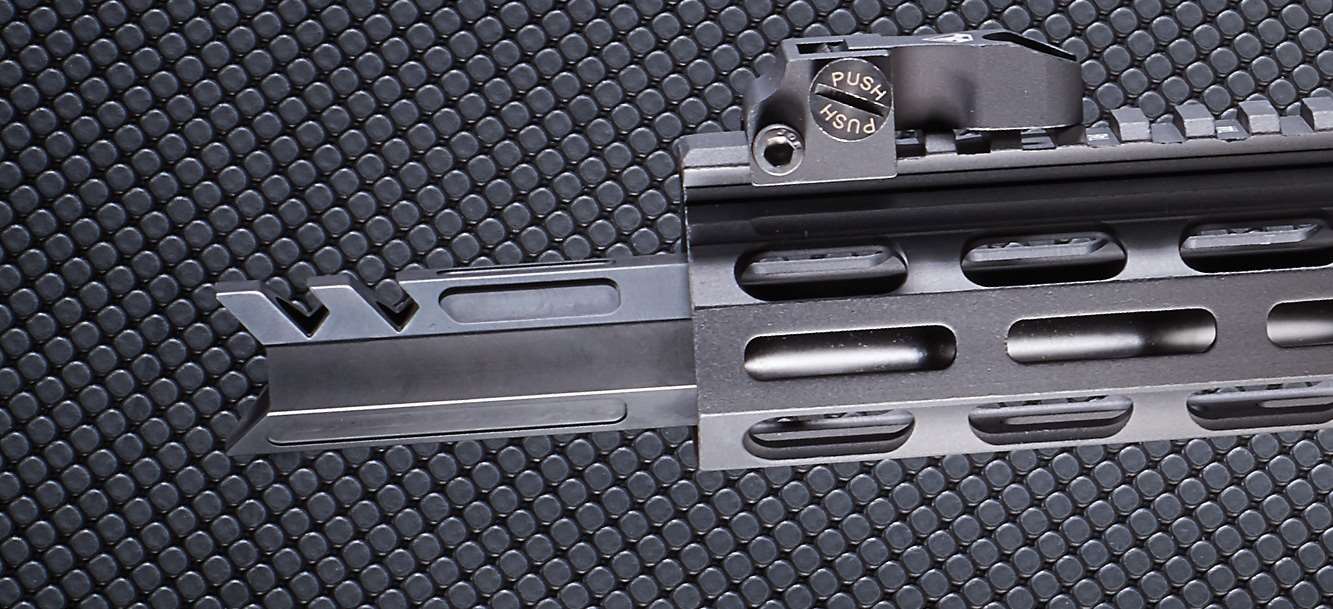
The heart of the direct impingement carbine is a forged, flattop and mil-spec anodized upper/lower pair. A 16-inch, 1-in-8 twist, 416 stainless lightweight barrel terminated with DoubleStar’s own Big Timber brake and wrapped in a Samson M-Lok handguard fronts the .300 ARC. The back of the rifle shows the same attention to rugged performance with a Tac Latch charging handle and Mortar Plate buttstock. (This last is suggested to be of door-breaching strength, and we believe it. It’s also handily fitted with a small rail section for a monopod-style rear rest.)
Where versatility re-enters the picture is in the .300 Advanced Armaments Corp. (AAC) Blackout chambering of the ARC. There’s a tendency to think of this as a new cartridge since it was standardized with the Sporting Arms and Ammunition Manufacturers’ Institute (SAAMI) in 2011, but it has antecedents going back to the 1960s. It also differs only trivially from the J.D. Jones .300 Whisper first offered in 1992, but shares the raison d’être: To bring .30-cal. capability to the MSR platform with minimal changes (only chamber, bore size and gas system length depart from 5.56 mm dimensions), and in both supersonic and subsonic loadings.
Now several range sessions down the road, we emphatically join military and civilian shooters who have come to prize the caliber for what is essentially two-guns-in-one versatility. “Gun one” takes the form of supersonic loads with bullets from 80 to 150 grains. They retain their energy better than 5.56 mm (though they drop faster), and have made serious inroads in hunting and competitive circles.
“Gun two” is comprised of the heavy bullet, subsonic loadings (180 grains and up). Lacking the supersonic “crack,” these are easily and effectively suppressed, and are good for target work and defense.
Both velocity ranges were outstanding in terms of reliability in the ARC, with the only malfunctions being magazine related.
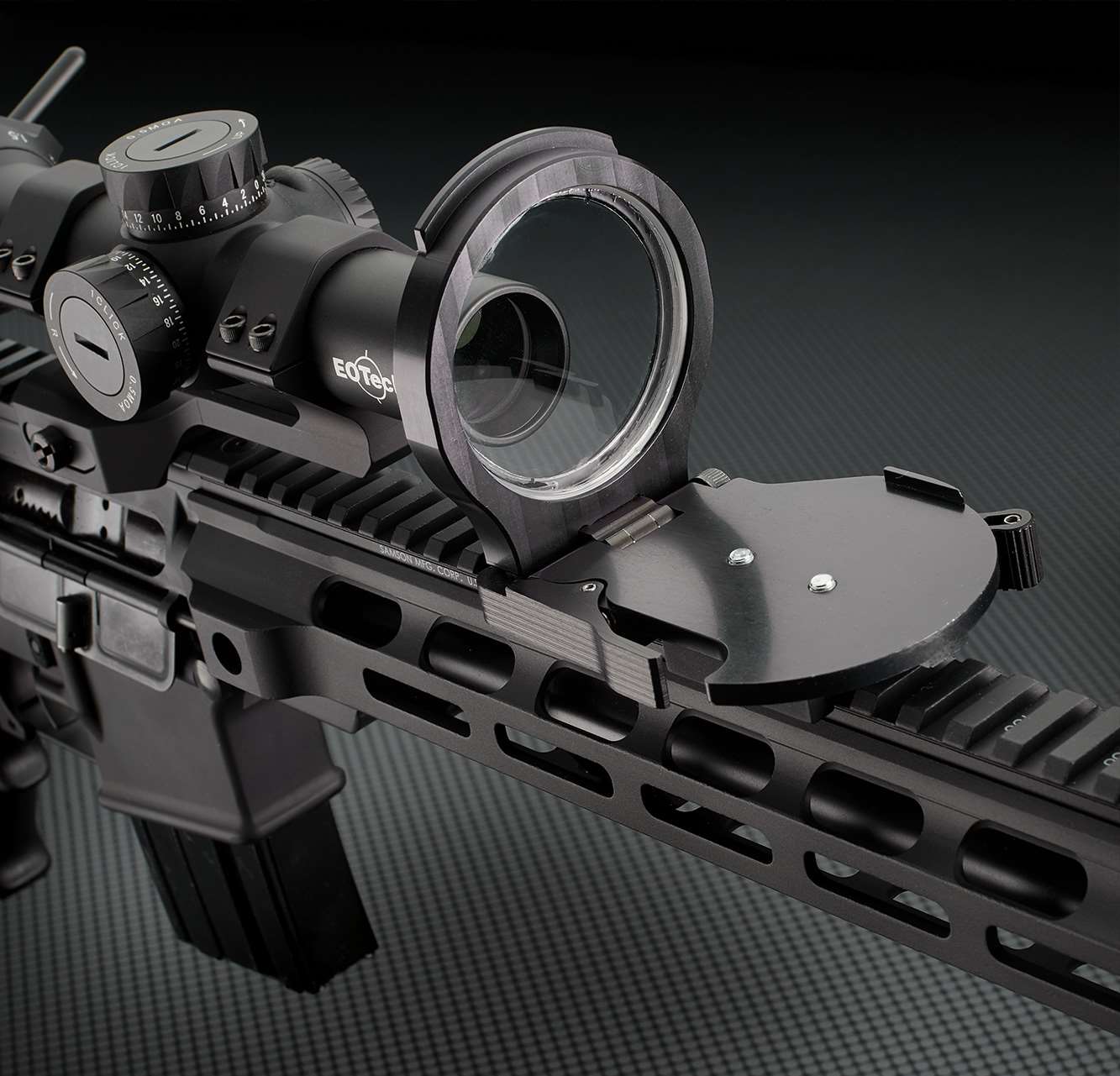
Another joy remains to be considered with the DoubleStar ARC. If you’re looking for a first modern sporting rifle, it would be a fine one, and we think there’s ample evidence that the experimental stages of .300 Blackout are long over. But remember, you don’t give anything up by going to Blackout first, either: All the “upper” swaps the rest of us have been enjoying for years will still work for you, too.
Nuts And Bolts
Safety — One of the very few downsides of the 5.56/.300 pairing on the MSR/AR platform is the ability of the two rounds—in some circumstances—to be cross-chambered. It’s tough to get into trouble with 5.56 mm in a mag intended for a .300 Blackout upper, but the other way around—that is, a .300 Blackout in a 5.56-chambered rifle—is a decided “ka-boom” danger. Various arrangements will go a long way to preventing mishaps of this sort, but the best is probably the simplest: As with any other firearm, take the time to check each and every round as you load it.
Sighting — DoubleStar outfits the ARC with a very good set of Samson folding, all-metal conventional sights, but most will want to shoot with an optic, too. We had a particularly nice EOTech Vudu FFP 1-6x on hand, and it performed with predictable excellence. While the marked BDC values won’t apply to .300 Blackout ballistics, they could easily be re-calculated for both subsonic and supersonic loads. We ran up some very elementary range cards, and discovered the Vudu/DoubleStar combo easily capable of clicking back and forth for quality hits at multiple ranges, and with several varieties of sub- and supersonic ammunition.
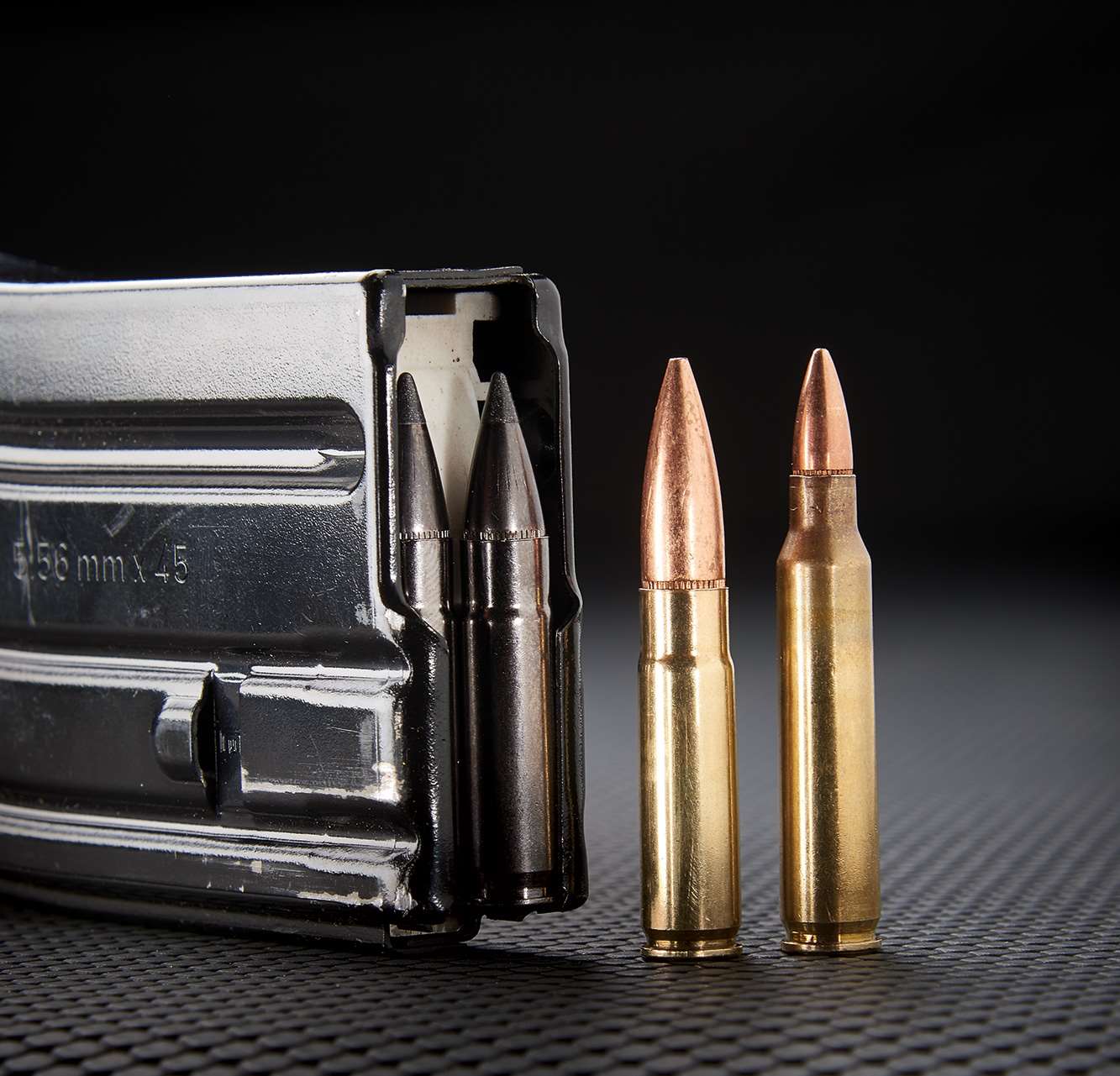
We also ran the exceptionally clever TacomHQ TARAC Bravo with the Vudu and an Aimpoint Carbine Optic, and put the clever synergy of the device to work with doubled utility on the ARC. If you’re unfamiliar with the TARAC, we predict you won’t be for long: It’s a rugged, flip-up prism that provides a precise zero shift for virtually any reticle type and magnification, yielding a second, highly repeatable zero for any caliber, loading or bullet. Down for supersonic and up for subsonic, alternating shots with the ARC fell with ease in a 5.6-inch circle using an identical point of aim. That’s impressive and useful, especially for the roughly 2x difference in velocity and bullet weight the .300 Blackout boasts.
Trigger — We expect there will be some grumbling about the “standard trigger group” that ships in the ARC. But thinking this through reveals a pragmatic turn on the part of DoubleStar: There’s just no way to figure out which of the literally dozens of MSR triggers will appeal to the most customers, or seem “worth it” for whatever cost the component adds. This makes the company’s safe, economical choice a good one in our view, but we’d expect to improve it in a rifle of our own—and especially for a cartridge with the accuracy potential of the .300 Blackout and a rifle as good as the ARC.
Frank Winn has been studying arms and their relationship to tyranny, meaningful liberty and personal security all his adult life. He has been a firearms safety/shooting instructor for more than 20 years, and earned state, regional and national titles in several competitive disciplines.












